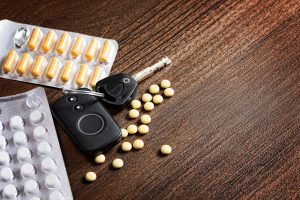The Governors’ Highway Safety Association and the Foundation  for Advancing Alcohol Responsibility are reporting that 43 percent of fatally injured drivers with known test results tested positive for drugs, while 38 percent tested positive for alcohol.
for Advancing Alcohol Responsibility are reporting that 43 percent of fatally injured drivers with known test results tested positive for drugs, while 38 percent tested positive for alcohol.
Drug impaired driving or drugged driving, whether a motorist is high or impaired on prescription medication, marijuana or opioids, is difficult to confirm because there are no roadside tests as there are for detecting drunk driving. Experts believe a standard test will be difficult since drugs have varying effects on users.
Surveys of regular marijuana users in Colorado and Washington state, where recreational use of marijuana is legal, found that almost none of them thought marijuana use impaired their driving, while they believed drinking alcohol did.
The report recommends that states develop education campaigns, which can include discussing drugged driving in driver education classes, and informing physicians and pharmacists about the risks of driving on prescription drugs.
To review the report and recommendations visit: www.ghsa.org/resources/drugged-driving-2017.


